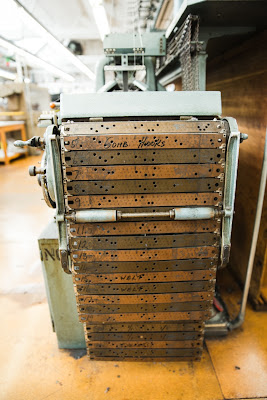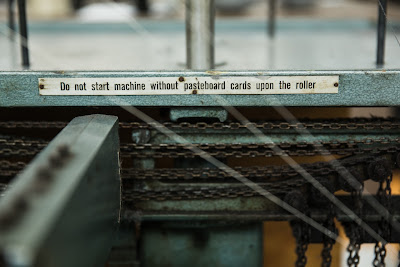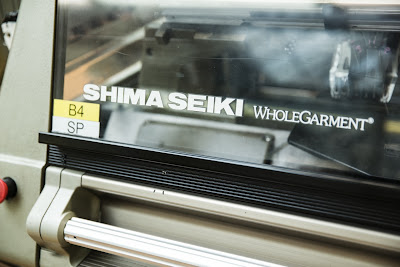Fans of traditional weaving and knitwear brands are funny about old machines. They often equate old machinery with superior techniques, when the new machines usually do at least as good a job – just faster. Usually the reason the brand still has old machinery is that new looms or knitting machines are just expensive, sometimes costing hundreds of thousands of pounds.
Fox flannel is no longer finished by bashing it against a wall, for example – as my visit to WT Johnsons witnessed. Most Bresciani socks no longer have handlinked toes – a machine was invented in 2000 that did the job, with no loss of quality. And while touring John Smedley a couple of weeks ago, it became clear that the old fashioning techniques have no inherent advantage. John, our tour guide, said he still thought the quality was better, but colleagues disagreed.
There are some areas of menswear, however, where the demand is relatively small and therefore modern machinery has yet to penetrate. One of those is knitted cotton garments, hence the advantage of this machine.
It was made by German company Stoll in 1955 for the Smedley factory. No more have been made since. It uses an old-fashioned system of punched wooden slats to input the desired design – similar to the paper cards still used on a lot of other knitting machines, as seen at Brescianiand Corgi(and indeed on mechanical organs).
The machine is used to make the trimmings – collars, cuffs and ribbing – for Smedley’s Sea Island Cotton range. No other machine can make cotton collars. They can’t create the rigidity necessary to support the elongated shape of the old-fashioned Smedley collar, as seen on the Isis and Leander models. Wool trimmings are made on another, more modern machine that works with a different tension.
As long as Stoll, Shima Seiki and other designers of these machines remain convinced that the market for cotton-collared knitwear is not a lucrative one, this process will remain unique to Smedley.




































As a fan – and very frequent user – of John Smedley clothes, it is very interesting reading
“No other machine can make cotton collars.”
Do you mean at the John Smedlay factory or world-wide?
Yesterday I bought a knitted shirt at H&M with a knitted collar that had the “under-collar” knitted more rigidly to give support to the collar. It is as good as any of the cotton Smedley shirts I own.
Worldwide, but the statement is a simplification. Your collar, for example, may have been knitted in two sections, as you seem to imply. That is an easier way to add rigidity.
One section. The lower part (corresponding to the under-collar on a regular shirt) was knitted in a thicker and tighter fashion to give support.
Interesting. That sounds like a different method with perhaps the same goal in mind. The Smedley one just works on the collar itself.
i have use stolls for collar like 220 full/ shape callar and use cotton and polyester/cotton as well as polester.WITH MACHINES today that type machine is no longer use .SHIMA SEIKI are use as well as unversal ,or any machines that can do the job .I AM till doing collars /plain. striples. and jacquard collars . MOST of the old type machines were we had to punch out paste/cards have been taken out of production i use to make jumpers on stolls and the new stolls are good .and can do anything you want .IT is a bad to see all of textile in sydney gone due to imports and prices together withlabour costs going up.